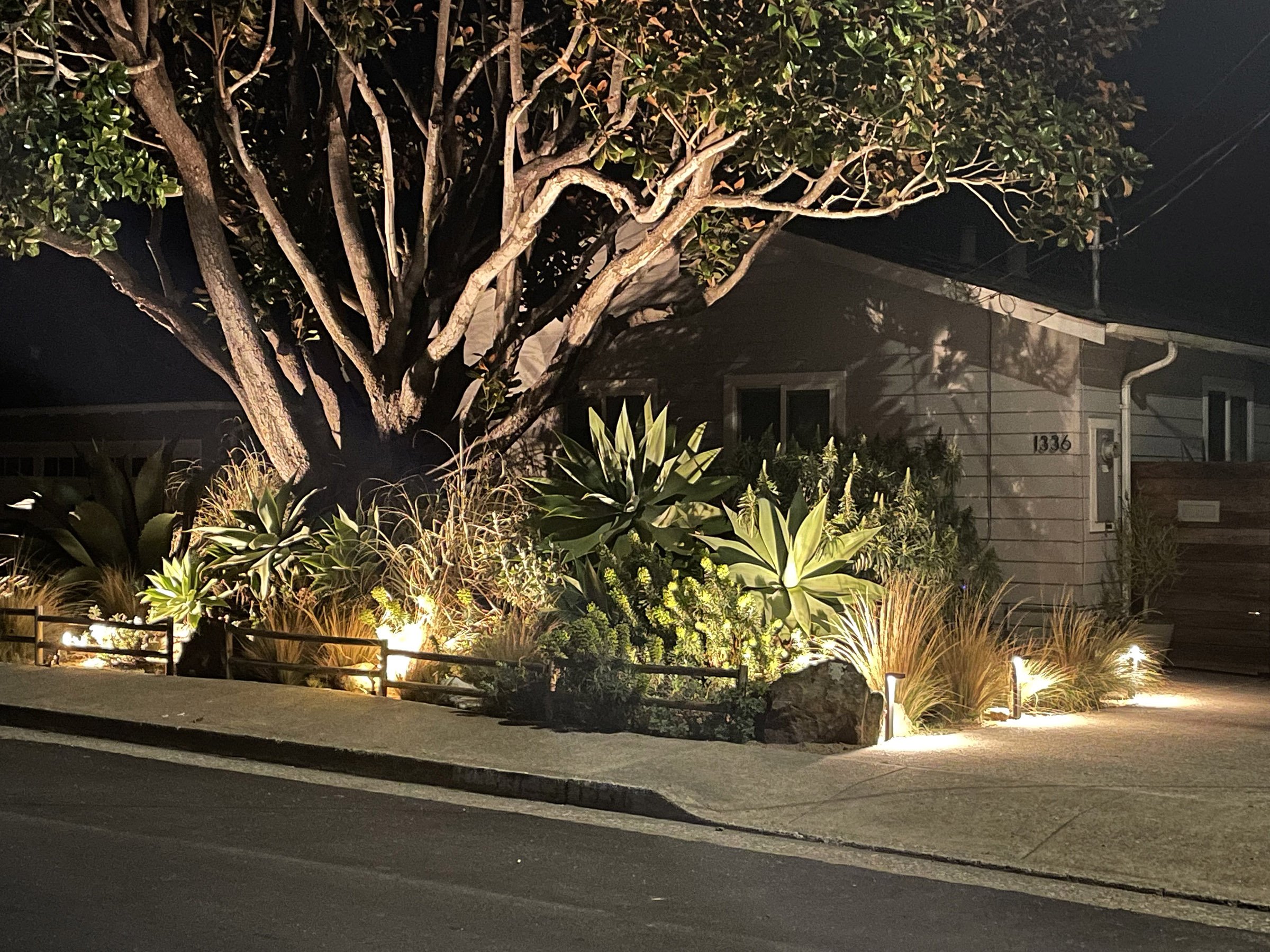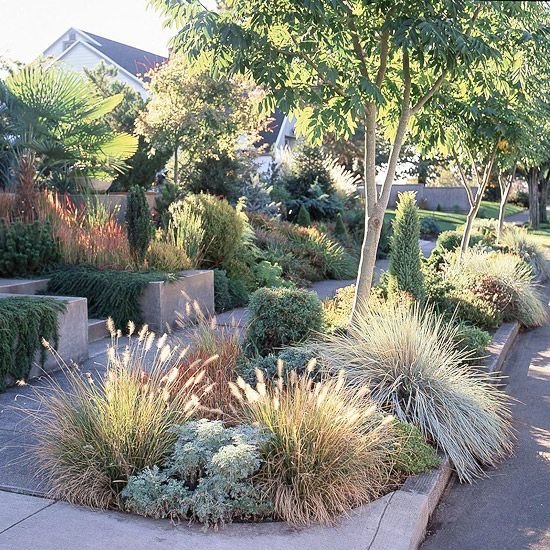8 Ways Landscaping Affects Your Home Value
By Annie
The real estate market is in flux, but one thing usually holds true: homeowners want to maximize their profit when selling a house. And there are a few items that can positively and negatively affect home value that are worth looking at before you list your home. Spending some money on improvements can often increase the value of your home by more than the cost of the improvements.
Data repeatedly shows that attractive landscaping has a big impact on home prices. Depending on location, sellers can add anywhere from 5% to 17% more value to their home with a well-designed and maintained landscape, and the return on investment in landscaping ranges from 25% to a whopping 400%.
Conversely an October 2021 study by Trees.com, surveying 1,250 real estate professionals, shows property values can decrease by up to 30% due to poor landscaping alone - that’s a drop of up to $303,000 based on median Bay Area home prices right now.
So, clearly choosing what landscaping projects to tackle before a sale is important. We’ve found eight landscaping projects that industry experts say are worth the investment to boost your home's value, and a few pitfalls to avoid when redesigning your gardens.
1. Consider your trees
Planting trees can seem controversial, especially in a state with a dangerous fire season, but if you do it right the presence of trees can be a game changer. “Almost everything you purchase depreciates. The exception is trees,” says Dan Beaulieu, real estate agent, contractor, and founder of Burlington House Buyers. “Trees that are mature add to the value of a home. The sheer presence of big trees increases property prices in an area by 4 percent to 20%.”
How to avoid pitfalls? First, to reduce fire danger make sure any trees are well away from the house itself - defensible space is everything. This will also help prevent the second common issue - falling branches hitting your home, and roots getting into your septic system, foundations and other critical structures.
Choose the right trees - ones that will perform the intended function (perhaps shade and privacy) without dropping millions of leaves or having a propensity for falling over in high winds - and buyers will love them.
2. Maximize curb appeal
When you create a beautiful front garden, it signals to buyers that you’ve taken the same care with maintaining the rest of the house. Make sure your front walkway is on point by planting drought tolerant flowering plants and keeping it clean and neat - it’s the first thing any buyer will see, and first impressions really do count!
3. Install landscape lighting
Quickly becoming one of the most sought-after outdoor landscaping features for home buyers, landscape lighting illuminates your home for sale perfectly as buyers do the obligatory evening drive through the neighborhood to get to know it better.
"A well-lit yard automatically improves the overall look of the house, hence adding to its value," says Dan Beaulieu. "Solar-powered and LED lighting solutions have emerged as viable alternatives to traditional hard-wired lighting in recent years."
Properly installed, stylish outdoor lights illuminate your plantings, silhouette your trees, prevent stumbling in the dark and deter intruders, and have an ROI of 50%-60%. Good lighting can even increase your property value by up to 20%. We recommend choosing high quality fixtures that are low voltage and will stand the test of time.
4. Get cozy with a fire pit
Our Bay Area evenings can be chilly, and as a result a fire pit was one of the most installed garden features during the pandemic when people wanted to get outside safely. Perfect for evenings under the stars with friends, a fire pit is one of the most easily recouped expenses for homeowners.
The American Society of Landscape Architects released a survey that found fire pits were in the top ten backyard projects with 94% of consumers saying they were popular.
Additionally, 39% of real estate professionals surveyed deemed them the most important hardscape addition a homeowner can make. Seems like a cozy outdoor addition might make sense for your garden.
5. Make use of mulch
Weed barrier sheeting isn’t much use - it’s unattractive to look at, doesn’t work well, and leaves shreds of plastic in the environment. However, not only will a thick layer of mulch around your plants reduce evaporation, prevent weed growth, and keep soil temperatures even, it will smarten up the appearance of your yard right away.
It is easy to lay mulch where it’s needed to fill gaps and create a neat and tidy look, and while it may seem subtle, the impact is huge on the visual effect - not to mention the health of your plants. Read our article about mulch use to find out the best, and safest, ways to use mulch.
For fire safety, we recommend non-combustible mulch such as stone, rock and gravel close to your house (from 0-5’ away). Then you can use composted wood chips or bark nuggets from 5-30’ from the house, no more than 2” deep. Separate continuous wood chip areas with non-flammable materials such as decomposed granite, gravel and rocks.
At 30 feet and beyond from your home you can use composted or medium to large wood chips up to a depth of three inches - just avoid fine, stringy mulches. They burn faster than larger chunks.
6. Create privacy
People love houses with huge windows - all that light flooding in is a very nice way to live. However, with those big windows comes a loss of privacy, and home buyers find that off-putting.
A thoughtfully planted garden can screen you from the neighbors and passers-by, though. You can create seclusion and a sense of sanctuary with well chosen plantings and your home will be all that more attractive to buyers.
7. Convert to sustainable landscaping
The demand for drought-tolerant landscaping, or xeriscaping, has been increasing steadily in California and the entire western US. With drought at an all time high, low water use gardens become critical for a number of good reasons.
The time and money saved by using plants that need less upkeep really adds up - a lawn that needs daily watering, weekly mowing, monthly feeding and a separate paid crew to keep it looking good is a real financial drain! ($50-200/visit in San Francisco, and easily a lot more if your lawn is huge)
But even without a lawn, trees and other plants can be a huge water drain at a time when water prices are skyrocketing. Added to that, increasing local regulation has been steadily reducing the allowed use of potable water on landscaping, even instituting fines of up to $500 and in some places banning lawn watering outright.
Drought tolerant plantings not only save money and time: Bees, pollinators, and other wildlife benefit from gardens filled with native plants. Effectively disposable irrigation lines that just add plastics to the environment are eliminated, also reducing cost. And that nightmare scenario where you go on vacation and come home to find the irrigation failed and your plants all died? Not a thing.
“Plenty of home buyers are looking to purchase Earth-friendly properties. However, it doesn’t mean that they would forgo a decent-looking yard. In fact, these past few years have seen an increasing demand for drought-tolerant properties,” says Beatrice de Jong, broker and consumer trends expert for Opendoor.
8. Professional design is key
Alex X. Niemiera, Professor, School of Plant and Environmental Sciences at Virginia Tech published a study that found that a home with great landscaping had a significant advantage over other similar homes with no landscaping.
That advantage ranged from 5.5% to 12.7%, which translates into an extra $74,800 to $172,720 in value on an average $1,360,000 home in the Bay Area. That’s huge.
But what is “great landscaping”? Ranking the factors that added to the perceived value of the home, design sophistication accounted for the greatest percentage of value added, at 42%, with plant size and diversity following close behind. What does that mean for you?
Hire a landscape design company (ahem…) to help you maximize your return on that investment, and remember that unlike a new kitchen, a garden only improves and grows with time, increasing that return on your investment even more.
According to BobVila.com, the website of the original host of TV’s ‘This Old House,’ the biggest landscaping mistake that homeowners make is not having a coherent plan. Homeowners begin projects, start to clear areas, put in a mix of plants, and proceed without a plan. The result is an assortment of plantings and gardens that give the property a disorganized feel. Following a professionally prepared plan will lead the homeowner to a beautiful property while remaining within a pre-established budget.”




